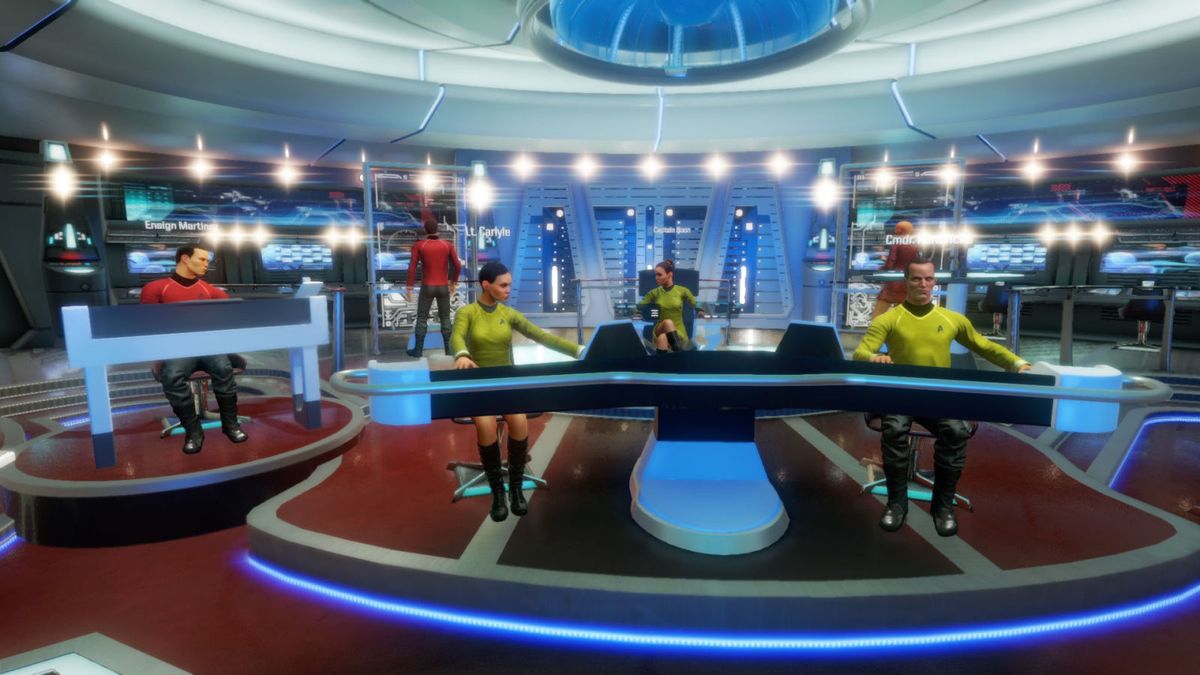GamesRadar+ Verdict
A thrilling, authentic recreation of Star Trek that brings out the team player in everyone. Just a shame it's such a pain to set-up.
Pros
- +
A wonderful recreation of Star Trek
- +
So much to see and do
- +
Intuitive controls bring everyone together
Cons
- -
The old Enterprise missions are a bit bum
- -
Set-up is very fiddly
- -
Only works well with 4 fully VR-enabled friends
Why you can trust GamesRadar+
You’ll probably never play Star Trek Bridge Crew. At least, not how it’s really meant to be enjoyed. That’s not because this is a poor game, or that it lacks features or fan service - it’s just too rarefied an experience. While you can crew both the USS Aegis and the Enterprise with fewer than four human crew members, it really isn’t the same experience. And while you’ll be able to find randoms or players from LFG groups to boldly go with, Bridge Crew is infinitely better when played with friends. So that’s four of you, with VR headsets, and a copy of the game, and the will and time to role-play Star Trek. Even we, a website that writes about games, VR, and Star Trek really struggled to put in the necessary playing time and overcome the technical hurdles to squeeze the best out of this wonderful game.
It’s a crying shame really, because Bridge Crew is absolutely magic when played right. You and your friends crew the USS Aegis sent on a critical mission to explore The Trench, a piece of uncharted space, in the hopes of finding a new home world for the scattered population of Vulcans, who lost their planet in the recent movie reboot. Each story mission is broken into smaller chunks, allowing you to hit objectives before either warping to a new part of space, or Impulse travelling shorter distances. It’s extremely well paced, although there are occasional spikes in difficulty mission to mission.
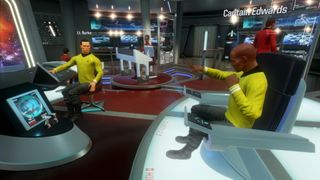
So, what do you actually do? Each player assumes various roles on the bridge of the Aegis (and the Enterprise, but I’ll get to that later). There’s a Captain, who issues orders and can assume control over various smaller functions; Helm, who steers the ship and Warps when required; Engineering, who allocates the various power resources of the vessel and makes repairs; and finally Tactical, who scans and shoots stuff. At first glance certain roles appear more glamorous and involved than others (who the hell wants to work Engineering when you can’t even steer or shoot?) but each of the positions get missions that put them right at the forefront of the action. One stage that scuppered our team of misfits for ages required the Aegis to flee from Klingon attacks after being damaged by an energy anomaly. Suddenly Helm and Tactical seemed like background noise, as the Engineer’s role - keeping the ship operational, and making frantic repairs - came to the fore. “Just keep us alive” became the Captain’s repeated command.
Bridge Crew, however, is way more than the sum of its parts. You never feel like four people simply pressing buttons to make stuff explode - each mission forces you to work as a proper team, and the division of responsibilities is smartly done. Co-operation and teamwork is often lauded as necessary for most online games, but Bridge Crew makes it both essential and effortless through solid communication channels and intuitive controls. Oh, it’s heaps of fun. While it’s a beautiful thing to behold when all four crew mates are working in perfect harmony, rescuing allies with ease while blasting Klingon attackers into smithereens, the moments I recall most fondly from my sessions are the ones where we messed up. Maybe it was because the Captain (naming no names, Leon) lost control of the situation. Or the Helm (yeah, ok, me) steered into an asteroid by accident. Or we blew up something we shouldn’t have blown up (looking at you again, Leon). Bridge Crew makes perfect cooperation feel like the norm, and the points where communication breaks down feel like the hilarious, quirky exceptions that add flavour to your overall experience. Even in failure, each session feels like a roaring success.
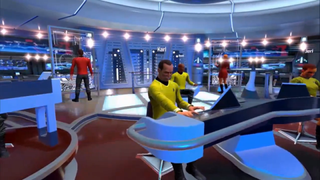
What helps massively is the authenticity of the simulation. Because everything looks and sounds like Star Trek, it’s far easier to believe you’re actually on the bridge of a Federation vessel, speaking to other Federation crew. Who just happen to be your friends. Every button, every piece of uniform, every line, every sound effect - they all create a near impeccable sense that you’re in the Star Trek universe. That’s both an incredible achievement, and an absolute necessity for a game like this, especially as you can scrutinise every detail in VR.
However, too much authenticity can be a negative. Having proven our mettle playing as the crew of the Aegis, my team and I decided to have a crack at piloting the original Enterprise, from the very first TV shows. And, despite having minor nerdgasms at how beautifully recreated it all is, the actual gameplay experience was anything but sublime. Gone are the lovely sleek controls, sensors, and view screens of the Aegis; they’re replaced by a sea of ugly buttons and primitive maps that make you feel both blind and totally out of control of the ship. It’s exactly how the original Enterprise should be, but unless you’re an ultra-hardcore Trekkie, it simply isn’t an entertaining experience. Doing anything at all - even Impulse flying from one point to the next - is an exercise in confusion, shouting, and frantic button-hammering. Suddenly, our well-oiled crew - deprived of the trappings of technology - had broken into four baffled human-fragments.
It’s amazing how much Bridge Crew loses when the slick teamwork fails, as was illustrated with our time (it’s optional, by the way) in the original Enterprise. And that’s also exactly what’s lost when you play under anything other than optimal conditions. Have a crew of three? It just isn’t the same. Play with people who you don’t really know, and who maybe don’t respect or follow what you’re telling them? Blatant individualism in Bridge Crew simply doesn’t work, and one rogue crew member can utterly ruin things for everyone else. So, really, really, you need four friends, with VR headsets (and, to be honest, Move wands or other handheld motion controls) and a will to work together.
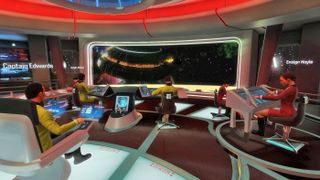
On top of all that, Bridge Crew’s connection options aren’t as great as they could be either. While it’s encouraging that you can cross-play with any combination of VR systems (essential for bringing crews together), and the connection is mostly stable, the actual process of getting everyone in the lobby can be a pain. It took us - a bunch of very experienced writers, who all own and regularly use VR - about 40 minutes, and several angry messages via a heated WhatsApp discussion, to get into our first game. That’s a massive hurdle to overcome, and it pains me to think that some people will feel defeated before they even get into a session. Sure, Bridge Crew is built for dedicated Trekkies, and people who love VR, but you have to possess a grim, near-reckless determination, just to get into a game.
Once you’re sorted, there is heaps to enjoy in Bridge Crew. Random missions mix up objectives every time (making replay, in theory, unlimited), you can tinker with your avatar to pleasing degrees of customisation, and the main story is beefy enough to keep you hooked into the headset for hours. Star Trek Bridge Crew never lacks for either quality or quantity, and it’s usually an absolutely absorbing experience once you’re in. But there’s that phrase: ‘once you’re in’. Precious few will have the money, resources, and friends to bring out the best in Bridge Crew, and so most of you reading this simply won’t play the game as it’s meant to be. Those lucky enough to bring everything together, though, will get one of the most entertaining, faithful, and unique simulations of any entertainment franchise ever. If that appeals, it’s most definitely worth the effort.
More info
| Genre | Adventure |

Despite Zelda: Majora's Mask basically being a horror game, one of its key devs didn't think its creepiest features were scary at all: "People on the team were like 'whoa!'"
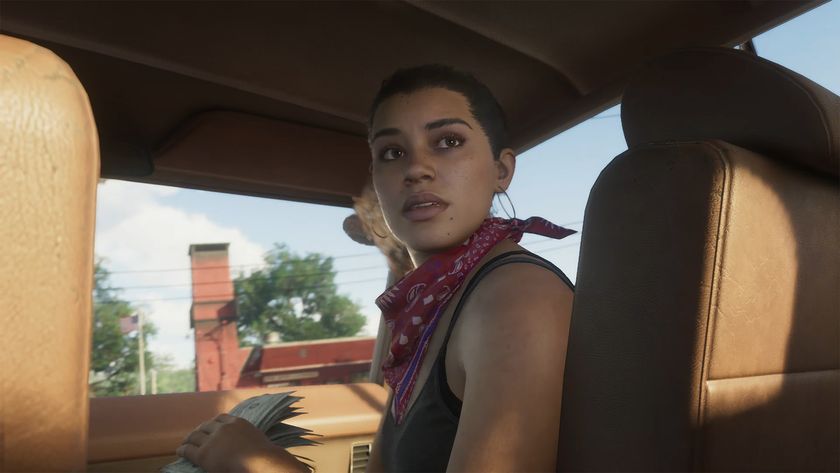
Corsair exec says GTA 6 is coming to PC in early 2026 and then quickly un-says that
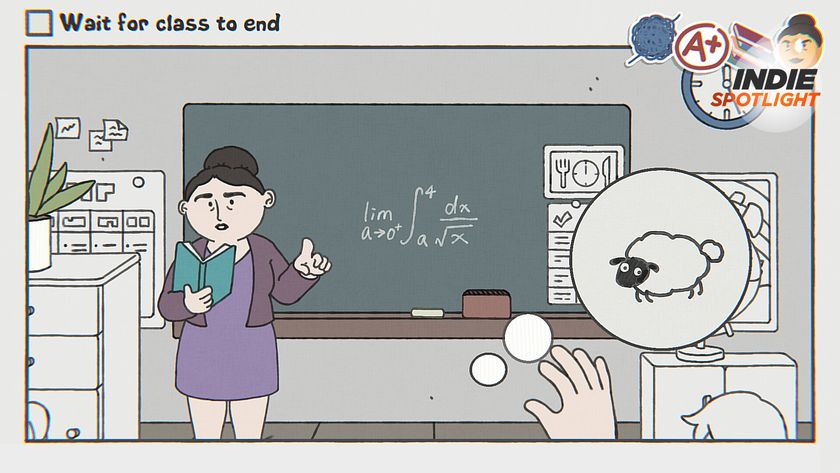
This puzzle game has done the impossible: waiting around for something to happen has never, ever been this fun
Most Popular





